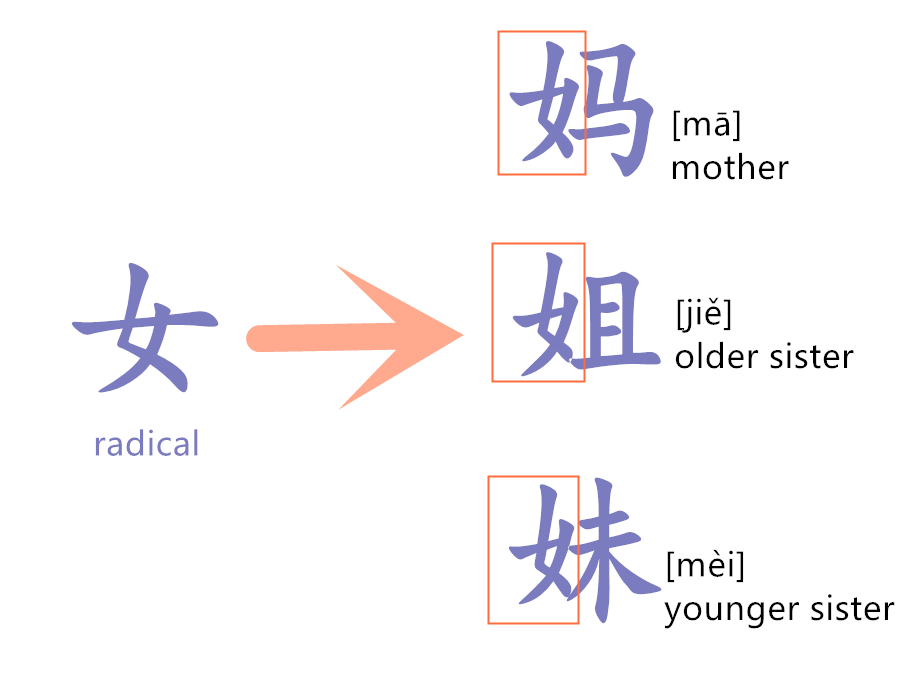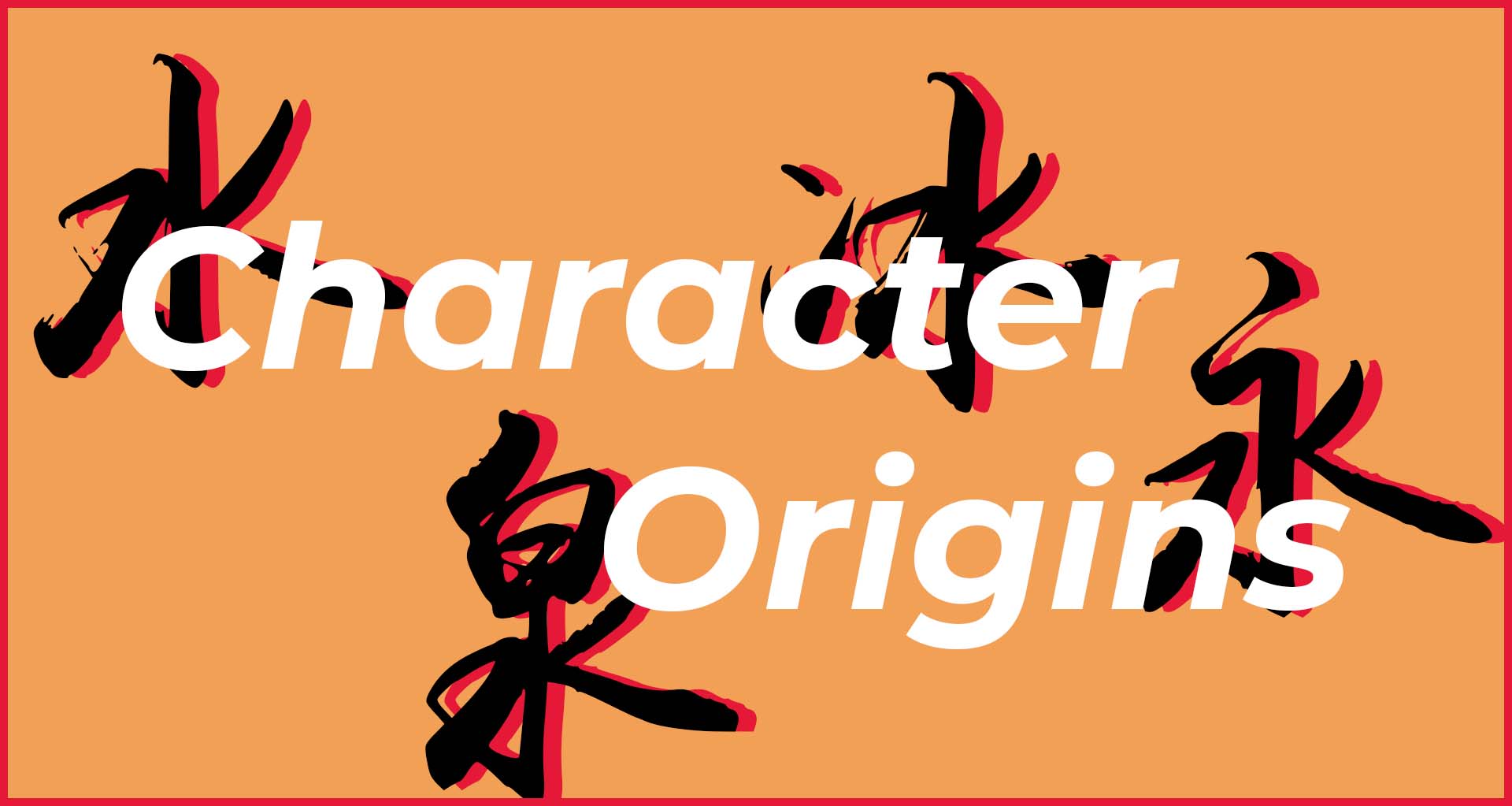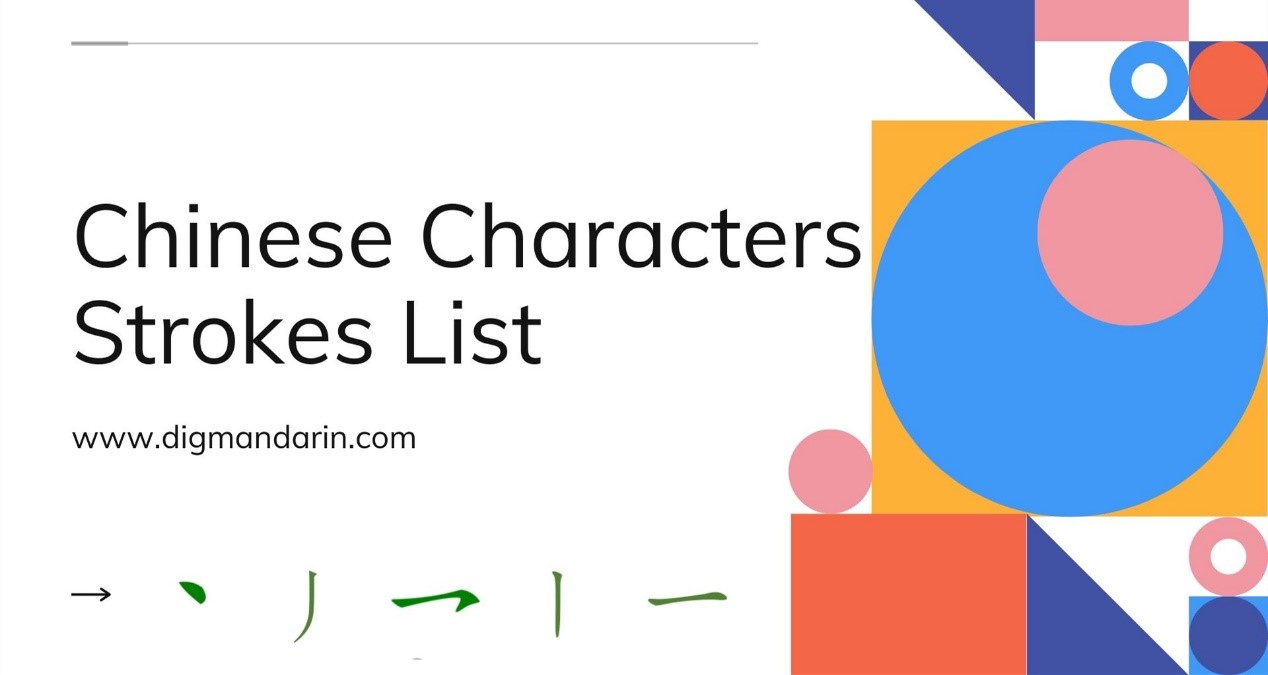Rise to the Challenge: How to Memorize Chinese Characters Like A Pro
How many Chinese characters do you need to know in order to be “fluent”? Well, on average, native Chinese speakers will have a vocabulary of approximately 8,000 characters, and the advanced levels of the HSK 3.0 exam require a vocabulary of at least 10,000 characters. I don’t know about you, but for me, thinking about learning that many words feels like staring up at Mt. Everest. Surely there must be an easier way to go about this.
Fortunately, you don’t have to rely on brute memorization to expand your vocabulary and meet your learning goals. You can rely on the writing system’s surprisingly intuitive structure, expertly developed learning strategies, and even more creative approaches to associating characters with their corresponding pronunciations and meanings.
In this article, we’ll look at ways to establish a strong foundation and then build from there to help you develop a vocabulary that is both rich and authentic. While a lot of this content is geared towards helping beginners find their way to get over the initial hurdle of adapting to a new writing system, the learning strategies and resources provided below are suitable for learners of all levels, especially those aiming to expand their vocabulary and enhance their ability to memorize Chinese characters effectively.
- Step One: Learn How the Chinese Writing System Works
- Step Two: Build Your Chinese Vocabulary Through Repeated Exposure and Practice
- Step Three: Test Your Knowledge Regularly
- Key Resources for Learning Chinese Characters
Step One: Learn How the Chinese Writing System Works
The first major step to solving these little puzzles is to understand the different components they’re made of and how those components are arranged. This may sound like a major investment of time and energy, but it’s a lot easier than it seems at first glance.
While we already have a quite comprehensive article on the fundamentals of character structure and how to write them, I really want to emphasize the importance of two common components: radicals and phonetic components.
Radicals, also known as 部首(bùshǒu), are the most essential part of understanding the meaning of characters. Take 女(nǚ) for example; by itself, it means “woman” or “female” but can be combined with other pieces to create words like 妈妈(māmā, mother),姐姐(jiějiě, older sister),and 妹妹(mèimèi, younger sister). There are 189 radicals in simplified Chinese, but Rome wasn’t built in a day and neither is fluency. You can focus on the most common, most fundamental radicals and still see major payoff in your studies.
The next key piece of the puzzle is phonetic components. Going back to the three words we looked at earlier, you’ll notice the pieces added to the radical, 马(mǎ, horse), 且(qiě, even/moreover), and 未(wèi, not), have nothing to do with the meaning, BUT the pronunciation does match closely or exactly. These phonetic components do not add anything to the definition of the character, but rather they provide a clue to indicate how you should say it out loud.
This is just a taste of what the Chinese writing system looks like when you break it down, but can you already see the mystery of these characters starting to dissipate? If you want to keep going more in-depth, you can also check out these two courses that provide an in-depth overview of the writing system to help you find your footing and become more confident both reading and writing Chinese characters.
Once you feel you have a solid foundation, then it’s time to start building.
Step Two: Build Your Chinese Vocabulary Through Repeated Exposure and Practice
This is the stage where you can start to have more independence when it comes to choosing both the content that you want to study and the strategies you want to use. This is the stage in my own learning journey where I felt lost at sea, adrift with no real direction and nobody to help me. And while I can’t tell you exactly what to study and how, I can provide some of my own insights to set you off on the right path.
Let’s first answer the question of WHAT to study. The answer here is going to look very different depending on your learning level. Quite frankly, for beginners, there’s a very straightforward answer: learn the words that are used most often. Chinese character frequency lists will provide you with the characters you hear most often in daily life, or you can always refer to the classic HSK vocabulary lists.
As you become more advanced and feel confident with the words you hear on a daily basis, you may need to look at specializing based on your own interests and learning goals. For example, if you’ve been learning business Chinese for several years and you plan on putting that knowledge to use working with a software company, then naturally it would serve you to learn the specialized terminology of your field. Or if you don’t have any professional aspirations, you can merely focus on areas of interest. If you’re a literature fanatic, then you may even choose to learn some archaic Chinese words to help you understand classical works and poetry. The only limit here is your imagination.
Next comes an even bigger question. Once you have a list of words you want to learn, HOW do you learn them without feeling like your brain is completely overloaded? The first key is based on the Chengyu 锲而不舍(qiè ér bù shě),persevere, and keep chipping away at it. The second key is to find the learning strategies that work for you.
Let’s take a look at some of the ways to make memorizing Chinese characters easier.
– Strategy 1: Flashcards and Spaced Repetition
We all know them, and we all have a love-hate relationship with them. Flashcards have remained one of the most common strategies for character memorization because they allow you to quickly check whether or not you can remember the meaning of a character. It’s also quite easy to find a spare 10 minutes for flashcards as opposed to sitting down for an intensive study session.
However, just doing flashcards doesn’t always guarantee results. It’s also hard to know how many times you should study a card before moving on, and what happens if you forget a word that you previously studied? This is where the concept of spaced repetition comes in.
Spaced repetition is an evidence-based study technique that is used by linguists, medical professionals, law school students, and more. This system is based around the concept of studying new terms more frequently and familiar terms less frequently. It focuses your attention on the words that are less familiar but still prompts you to return to words that you’ve already study, which strengthens your recall and makes you less likely to forget it.
While spaced repetition systems (SRS) can be difficult to manage with hand-made flashcards, many popular flashcard apps, such as Anki, already have an SRS baked into their code, making this strategy readily accessible to anyone.
– Strategy 2: Visual Cues
Do you consider yourself a visual learner? Then why not take advantage of the fact that many Chinese characters are based on pictograms. Radicals such as 口(kǒu) and 目(mù) pictorially represent the mouth and eyes, so they serve as visual cues to remind you of the meaning of words like 喝(hē, to drink) and 眼睛(yǎnjing, eyes). I’ve always found that making visual associations strengthens my memory more than anything else.
You can choose to draw these connections by yourself during your regular reading and writing practice, or you can do intentional visual association using an established guide, like Chineasy, designed to help visual learners memorize characters more effectively.
– Strategy 3: Storytelling and Mnemonics
Another strategy that is based around making external connections is storytelling. By creating a narrative around a new word, it can help you more effectively remember its meaning and importance in the language. You don’t have to write a novel. Even just writing a few short sentences can help your brain grasp a foreign term more strongly and more quickly.
This strategy is extremely effective for learning Chengyu, four-character idiomatic phrases that are often based on traditional fables. Learning the story behind these complex expressions makes a world of difference, and it’s truly inspiring to be able to learn more about Chinese history and culture while also expanding your practical knowledge of the language.
Mnemonic devices are a slightly more abstract strategy to remember the pronunciation and meaning of characters. These are often personal ideas or opinions that we assign to a specific character because it helps us recall more effectively and faster. Let’s look at one example together. I’ve been trying to learn the word 单独(dāndú, alone, singlehanded), and I have a coworker named Dan who recently quit. So now, when I see this character, I think of the fact that due to Dan, I now need to handle my work alone.
Personally, I have mixed feelings about this strategy because sometimes it can be very difficult to find a way to meaningfully link a character to a phrase in my native language. However, when you do find a solid mnemonic device, it can be extremely effective in helping you recognize the character later on.
– Strategy 4: Learning in Context
Sometimes the most effective way to pick up new terms is through learning on the job, which means learning new characters when you come across them while reading. Many linguists would say that this lines up with the strategy called Comprehensible Input, which is currently one of the most popular methods of learning a new language.
The reason why learning in context is so important is that it exposes you to the characters you will need most often in your day-to-day life, plus it adds additional insights about the word’s usage and cultural implications. Learning characters in isolation can teach you how to recognize and write them, but learning through real-life scenarios will help you turn passive understanding into active usage, which has a much higher impact on your fluency.
This strategy is one of the easiest to implement into your studies because it can be applied to any scenario where you are reading Chinese characters as part of a larger story or conversation, such as texting friends, reading books or manhua, and browsing social media.
When you come across a character that you don’t recognize, it’s important that you take note of its structure and components, plus the pronunciation and meaning. Thankfully, many popular reading apps like MandarinBean, DuChinese allow you to see a word’s pinyin and definition by tapping on it, or you can install a browser extension that will allow you to do the same on any website.
Step Three: Test Your Knowledge Regularly
No matter how you choose to go about memorizing characters, you need to ensure that you’re actually retaining the knowledge over time if you want to get the maximum benefit. There are a few different ways you can go about testing to see if you really remember all those words you studied.
– Test 1: Reading Comprehension
The first test is the easiest because reading only relies on recognizing characters and remembering their meaning. If you’re studying HSK-related vocabulary, then look at reading materials or mock tests that are aimed at your current level (or the one above!) and see if you are able to read through a passage smoothly, or if you feel like you’re hitting speedbumps in every sentence. Perhaps some words come back to you immediately, others you can figure out by looking at them for a minute, and some won’t come back to you at all. If you want to give yourself a grade, you can count how many characters fall into each of those three categories, but I find that you can most often intuitively get a sense of your performance just by going through the passage.
– Test 2: Written Expression
Now comes the real challenge. Can you both think of the character you want to use and then remember how to write it? If you’ve been studying vocabulary around a specific topic, such as how to order food, writing business emails, or describing a movie you saw, you can try to write a short paragraph or dialogue to demonstrate your knowledge. This will not only reinforce your knowledge of characters but also all of the grammar points you have studied. Don’t worry if you can write fewer characters than you can recognize, that’s completely natural and is even true of native speakers.
If you want to try this test but feel like your writing skills aren’t up to par, you can also consider typing your text. Different typing input methods can test your character recognition in different ways, such as inputs based on pronunciation, radicals, or stroke order. It isn’t as rigorous as handwriting everything, but it will still allow you to see if you’re retaining the information that you studied.
Key Resources for Learning Chinese Characters
Having the right tools to support your practice can often make the difference between finding success or falling short. This is a curated collection of apps, books, and courses designed to boost your Chinese vocabulary in ways that are extremely helpful, streamlined, and fun.
DigMandarin’s Chinese Character Courses
These courses are an extremely valuable resource for any student looking to familiarize themselves with the fundamentals of Chinese characters. I found that the instructor broke down complex concepts into digestible pieces, allowing me to learn without feeling overwhelmed. They’re also extremely affordable, and the format allowed me to access the course when it was convenient for me.
Pleco is by far the best Chinese dictionary app you will ever use. It offers an extremely comprehensive database of terms and phrases. You can also use any input method you want: Chinese, English, Pinyin, handwriting, or simply taking a picture. Certain add-ons can be purchased to add additional features, such as a flashcard system, but they are very low-cost and are a one-time purchase instead of an ongoing subscription.
Anki is an extremely well-known SRS (spaced repetition system) app used to create and manage flashcard decks. While its interface is still stuck in the 90s, it can be learned fairly quickly and lends itself to being used creatively. You can create your own flashcards and add supplements like audio and images to improve retention, or you can download existing flashcard decks created by other users. I’m currently using this extensive HSK 3.0 vocabulary deck, which includes writing and stroke order practice.
This series originally hit the scene as a book with an innovative take on learning Chinese characters through drawings, and it now one of the most popular methods for learning characters intuitively. They also now have an app that makes it even more accessible.
This app was a key piece for me when it came to learning characters in context. The interface is extremely intuitive, and it makes reading practice more engaging by offering a huge variety of content at different HSK levels. The premium subscription is quite expensive, but the free version is still very high quality.
The website offers graded reading material organized by HSK levels, all available for free. Each article features a variety of types, including news, business, stories, fun, and culture, among others. The selection of vocabulary lists tailored to each level is an exceptionally convenient method to learn words that match your proficiency. Engaging and progressively challenging content ensures a stimulating and effective learning experience.
Final Thoughts
Learning a new language can be a daunting task, let alone tackling a new writing system with its own extensive history and specific nuances. However, many have treaded this path before you and are ready to offer their expertise and tips to help you navigate the language with both curiosity and a hunger for learning.
Characters are the most basic foundation of the Chinese language, and learning them, especially how to memorize Chinese characters, is a unique task that challenges your brain to think in new ways. We are all unique individuals, and we learn in different ways. I invite you to try the strategies laid out in this article and see if they spark something new for you. It may just be the thing that ignites your passion.







This Post Has 0 Comments